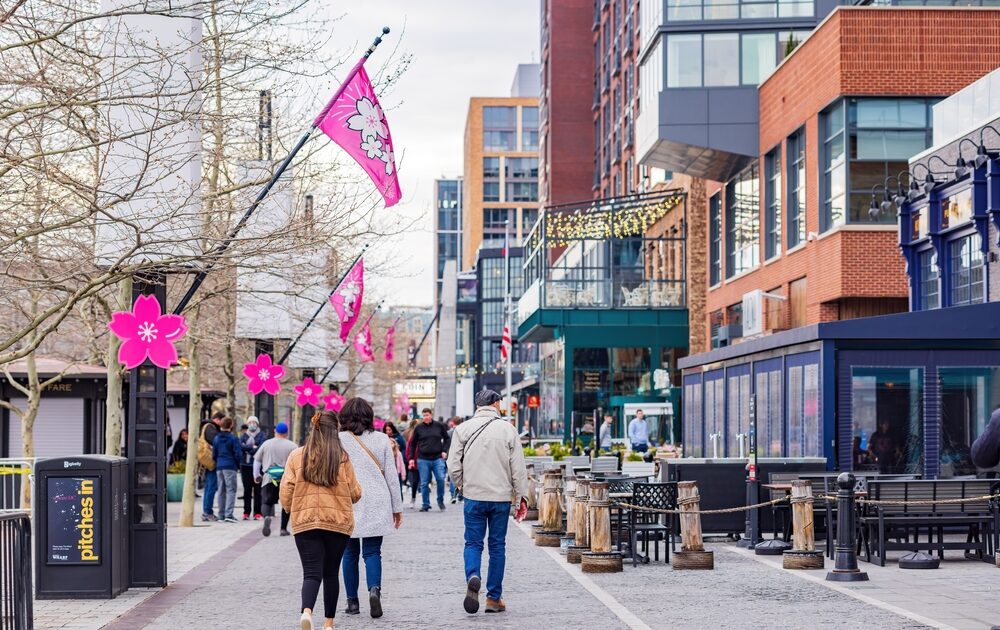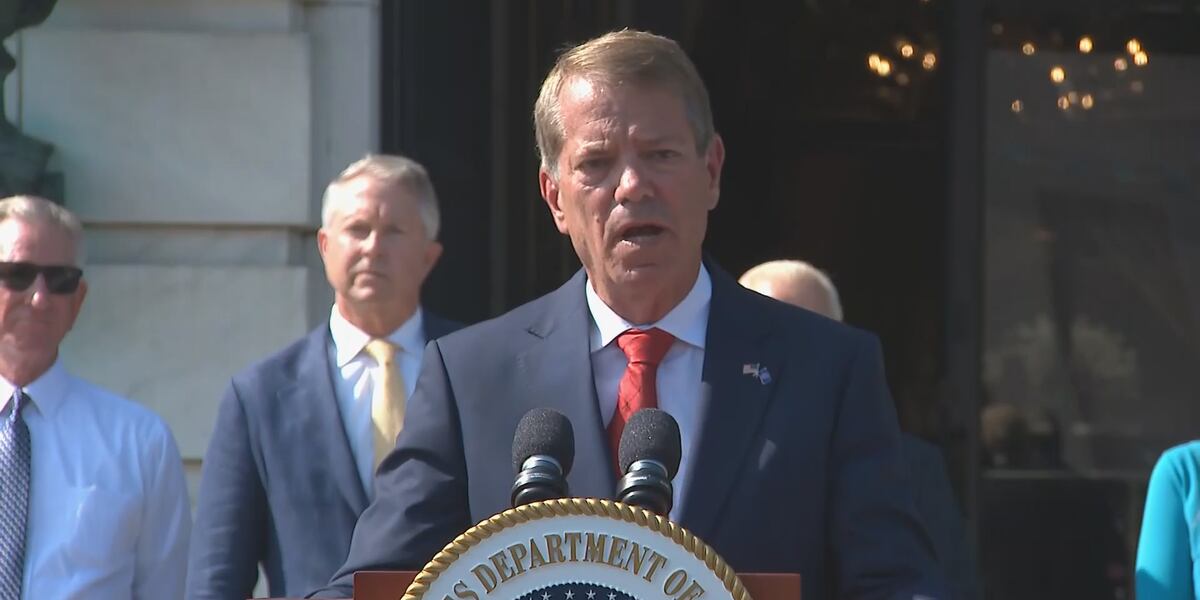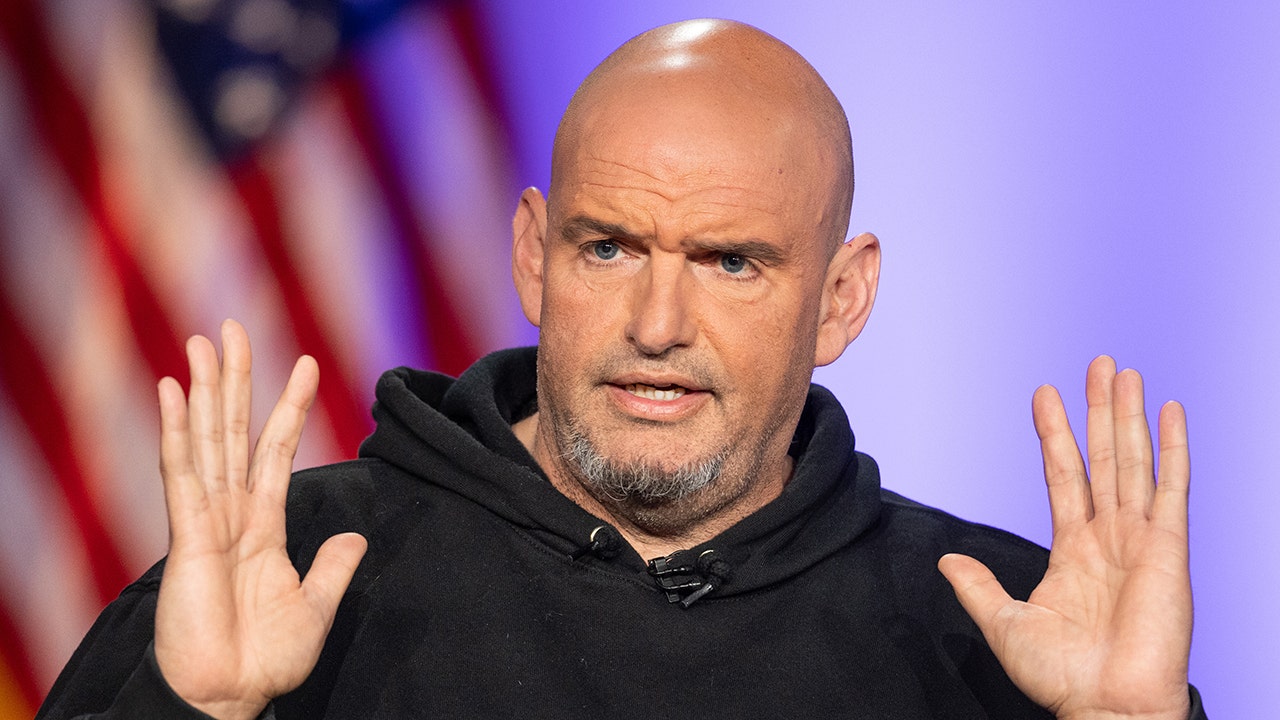Washington, D.C
How Washington, D.C.’s comprehensive planning process holds the key to enacting major zoning reforms – Niskanen Center

- DC’s planning institutions limit project-level discretion, activate more-representative citywide interests in development, and minimize NIMBY (Not In My Backyard) sentiment.
- The Comprehensive Plan describes the parameters for zoning laws and the Zoning Commission can only determine whether a new development proposal abides by it.
- The Advisory Neighborhood Commission model and the lack of power of the District Council provides community input on development, not community veto.
- States can empower themselves to pass their own zoning reforms by similarly balancing municipalities’ desires for community input and top-down decision-making.
Washington, D.C., like other major coastal cities, is in the midst of a housing crisis–even though the District builds more housing and has lower rents than cities like New York City and Boston. Mayor Muriel Bowser aims to create 36,000 new housing units by 2025, with at least a third being affordable housing. Most planning areas have already reached or are on track for their target number of units. This is unlikely to happen in other cities. What, then, makes D.C. different? The answer stems from its planning institutions that limit project-level veto points from advisory entities like Advisory Neighborhood Commissions (ANCs) and sources of hard power like councilmanic prerogative and allow for more representative citywide interests in planning and growth.
D.C.’s approach starts with the Comprehensive Plan, created by the District’s Office of Planning to lay out how the city will approach land use policy. The document is fully rewritten every 20 years and is updated intermittently every 4 years in conjunction with evolving citywide interests, represented by elected officials and nonprofits, and governs day-to-day zoning decisions. The Zoning Commission is an independent body that writes and amends the District’s zoning codes in ways that do not conflict with the Comprehensive Plan. If there is a rezoning effort, the Zoning Commission can only say whether such effort is consistent with the Comprehensive Plan, and cannot deny the application using its own discretion.
The other major part of the planning process is handling community input concerning the two main representative bodies, the District Council and the Advisory Neighborhood Commissions. District council members can only give input regarding development opportunities. Unlike cities such as San Francisco, it has no veto power over the Office of Planning or the Zoning Commission. The ANCs, created via a 1974 referendum mandated by D.C.’s Home Rule Act, are hyperlocal commissions representing District residents and. Through public meetings and lobbying to the District government, they cover a range of issues that affect residents’ everyday lives, including zoning and development. The District is required by law to communicate with the ANC commissioners when District-level actions will impact their constituents, and give their feedback “great weight” when making such decisions, making the commissioners more institutionally relevant to the zoning process than councilmembers. However, like the council members, commissioners cannot veto or directly change District-level proposals, as they are also not the decision-makers. This limited power means that ANCs play a tiny part in land use planning. When a developer seeks to rezone a property to allow a different type of development, NIMBY commissioners’ only option is to appeal to the District’s Zoning Commission.
NIMBYs have not stopped the Navy Yard and NOMA neighborhoods from being the top two zip codes in the nation for housing construction because they do not have much of an actual outlet to stop development at the grassroots level. They cannot have ANCs or the District Council use the public input process to veto decisions that would only benefit their neighborhoods, and they cannot sway the Zoning Commission to reject a proposal on anything other than it being inconsistent with the Comprehensive Plan. Although NIMBYs can delay or even stop projects through lawsuits challenging Zoning Commission decisions, the District’s planning process, when taking all pieces into account, effectively neuters a major pathway NIMBYs use in other cities to block housing growth.The result is that D.C. has a more representative outreach process than could ever feasibly be achieved by constant project-level community meetings riddled with furious debates at ANCs and the District Council.
Despite D.C.’s status as a federal city-state with its own idiosyncratic politics and institutions, there is a compelling contrast between the District’s lack of institutional NIMBYism and other parts of the country where different levels of government are feuding over the power to set land use regulations.
Currently, cities and counties have much control over zoning practices. They are fighting state-wide zoning reform bills that seek to standardize housing types in certain areas, such as ending bans on multifamily housing. From New York to Colorado, high-profile legislation meant to reduce regulatory barriers to housing construction failed in the state legislatures due to lobbying from municipal officials and allied groups. California and Massachusetts have been able to pass major reforms, but they continue to have subsequent fights with municipalities over their implementation.
Localities have long had entrenched power in deciding land use regulations, and many local officials are not keen to surrender that power to their states. The Colorado Municipal League said as much when they derided Governor Jared Polis’ zoning reform bill for its “unconstitutional preemption of home rule authority and inappropriate intrusion into local control.” In Massachusetts, the town of Holden has infamously been noncompliant with Section 3 of the state’s MBTA Communities Act, a law that according to the state Attorney General Andrea Campbell, requires all 177 municipalities with or near public transit lines to adopt a new multi-family zoning district. Although some towns complied following threats of cutting 13 different state programs, Massachusetts cannot rezone the area itself through the bill if Holden remains non-compliant.
The problem with NIMBYism isn’t just that it appears in public hearings and convinces city officials to oppose development. It extends to the fact that most of America has a tradition of local governance where municipalities, and especially local politicians, typically have the most control over land use policy and stifle rezoning efforts. As recommended in An Agenda for Abundant Housing, states should empower themselves regarding land use regulations and weaken cities and counties because states can best capture all costs and benefits from land use reforms. While DC is akin to a core city whose policies affect the broader Washington Metropolitan Area housing market, its institutions’ design regarding the best representation balance could provide a model for how such a system would work in practice at the state level.
States already delegate most of their land use powers to cities, whether it’s via home rule or Dillon’s Rule systems, and could conceivably use legislation or voter referendums to change existing laws or even their constitutions (at least compared to the federal Constitution) to weaken the powers of cities to decide land use rules. State laws could give cities and counties an official channel to submit feedback on state-level legislation tackling zoning reforms, allowing cities and counties to be like temperature checks for how residents feel about land use changes. Local feedback would be taken into account by the states when determining whether to approve the reforms, and this would allow NIMBYs to have a say at city meetings and via state legislature testimonies.
But since state officials would be judges of what good land use reform is and must consider the whole state and not just one city, they could break through the noise and make pro-growth decisions. This system would be akin to how D.C. gives hyperlocal representatives opportunities to have input but not to derail rezoning efforts. Municipalities may or may not be incentivized to fight top-down land use regulations. While cities would be liberated from much of the accountability for sweeping zoning changes, such directions will be the standard, not a deviation from the norm. Thus NIMBYs won’t have as much ammunition against local elected officials to vote them out.
There is recent precedent for this type of state-level institutional reform for cities: Massachusetts passed legislation in 2020 changing the requirement that municipalities must pass zoning ordinances and bylaws by a two-thirds supermajority vote to a simple majority vote when these proposals cover multifamily housing, mixed-use developments, and parking minimums. This change stripped land use veto power from small NIMBY coalitions and empowered larger pro-housing growth coalitions.
In a nation of 330 million people, there will always be disagreement over policy, and there will always be NIMBYs seeking to curtail pro-growth land use policy, whether it involves transit-oriented development or adjusting regulations for manufactured homes. However, over-empowering the smallest forms of government that represent the least amount of people to decide policies that profoundly impact broader communities, regions, and whole states is not conducive to a growing and vibrant economy. D.C.’s system allows local interests to be heard while allowing policy changes to be made in the District’s interest. Elsewhere, bringing land use decisions to the state level would allow for more responsive zoning changes that benefit more communities without granting veto power to small groups of well-connected advocates.

Washington, D.C
Delta Sigma Theta Sorority returns to D.C. for 57th National Convention

Andrea Stevens
AFRO Staff Writer
astevens@afro.com
Thousands of members of Delta Sigma Theta Sorority gathered in the nation’s capital for the organization’s 57th National Convention, celebrating more than 111 years of sisterhood, scholarship and service. The biennial event, held July 8-13, welcomed more than 20,000 attendees to Washington, D.C., where the sorority was founded in 1913.
Founded by 22 collegiate women on the campus of Howard University, Delta Sigma Theta is one of the largest historically Black sororities, with more than 350,000 initiated members and over 1,000 chapters worldwide. The return to its birthplace marked a meaningful homecoming for many members and served as a powerful reminder of the sorority’s legacy and continued impact.
Elsie Cooke-Holmes, the 27th international president and chair of the board of directors, welcomed attendees and reflected on the significance of the convention.
“This is Delta’s home, and I know for some of my D9 (Divine Nine) brothers and sisters, you’re at home too,” she said. “This convention is more than a convening — it’s a homecoming of strength and purpose. A sacred opportunity to reflect on where we’ve been, what we’ve built and the vision we carry forward as we continue to serve.”

The five-day event featured a mix of business sessions, service initiatives, educational forums and cultural celebrations. One of the highlights was the public meeting held at the Walter E. Washington Convention Center, featuring remarks from civic leaders, educators and national figures who applauded the sorority’s commitment to social action, economic development and public service.
Several awards were presented during the public meeting, but for the AFRO team, the Lillian Award stood out with deep personal significance.
Dr. Frances “Toni” Draper, publisher of the AFRO, received the Lillian Award. She is the granddaughter of the award’s namesake and a descendant of one of the sorority’s founders. The honor has been a part of her family’s legacy for generations. Dr. Draper shared a heartfelt tribute to her grandmother.

“‘Be strong. We’re not here to play, to dream, to drift. We have hard work to do and loads to lift.’ That hymn was my grandmother’s favorite — not just a melody, but a mandate,” Draper said. “She didn’t just hum it; she lived it. She leaned on those words through joy and heartbreak, from trials to triumph. She then passed that strength on to her family, her church and her beloved Delta Sigma Theta.”
Media personality Joy-Ann Reid, another recipient of the Lillian Award — named in honor of the sorority’s 15th national president, who championed the positive portrayal of African Americans — also spoke passionately about the power of Black storytelling.

“We have to call our own names. We have to tell our own stories. We have to assert our dignity on our own terms,” Reid said. “It is up to us to make sure that we don’t disappear, that our stories, our narrative, don’t disappear. Storytelling is how we do that, and I’m just honored to be in the business of telling our stories.”
The convention also brought significant economic impact to the region, generating an estimated $50 million for the District through hotel bookings, transportation and tourism.
“I am so delighted that you’re having your 57th national convention here,” said D.C. Mayor Muriel Bowser. “I was happy to hear that this is your second largest convening. I promptly asked, ‘Well, what was the first?’ And it was right here in Washington, D.C.”

Credit: AFRO Photo/ Andrea Stevens
Mayor Bowser went on to thank the sorority for its long-standing political engagement and for choosing the nation’s capital as its convention site.
“Thank you for your advocacy in City Hall during ‘Delta Days’ every single year for budgets that affect us. Thank you for your advocacy on Capitol Hill. Your legislators must hear from you,” Bowser said. “We appreciate you for spending those long Delta dollars in the nation’s capital, but beyond that, thank you for choosing this city for your convention.”
Washington, D.C
Family of congressional intern gunned down in DC speaks out: ‘He had big plans’

Family of congressional intern gunned down in DC speaks out
Eric Tarpinian-Jachym, a 21-year-old UMASS Amherst student from Massachusetts was tragically killed in Northwest D.C. near the convention center. Tarpinian-Jachym, a finance major was in the nation’s capital this summer interning for Congressman Ron Estes after completing a fellowship with The Fund for American Studies.
WASHINGTON – Eric Tarpinian-Jachym, a 21-year-old UMASS Amherst student from Massachusetts was tragically killed in Northwest D.C. near the convention center.
Tarpinian-Jachym, a finance major was in the nation’s capital this summer interning for Congressman Ron Estes after completing a fellowship with The Fund for American Studies.
Family speaks out:
His mother, Tamara Tarpinian-Jachym says Eric worked tirelessly to secure the internship.
“He banged on doors down in D.C.. He really wanted to work for a congressman,” she said. “He wasn’t partisan. He didn’t care. Democrat or Republican.”
Tamara says her son dreamed of one day living and working in Washington, D.C.
But Eric’s bright future was cut short.
The backstory:
According to D.C. police, officers responded to the 1200 block of 7th Street, Northwest, after hearing the sound of gunfire just before 10:30 p.m.
Upon arrival, officers found an adult man, unconscious and suffering from a gunshot wound. He was taken to an area hospital by D.C. Fire and EMS where he was later pronounced dead.
While investigating, officers also found an adult woman and a juvenile male, both conscious and breathing but also suffering from gunshot wounds. They were also taken to local hospitals for treatment of non-life-threatening injuries.
The victim was later identified as Eric Tarpinian-Jachym, a resident of Granby, Massachusetts. He was in D.C. working as an intern for the office of U.S. Congressman Ron Estes.
What they’re saying:
“I was prepared to stay in D.C. and help him in the hospital, but it didn’t work out that way,” his mother said.
His sister, Angela Tarpinian-Jachym remembers him as selfless and determined.
“Eric would do anything for anybody,” she said. “He had big plans and big dreams. We had big plans and big dreams with him.”
Now the family is asking the community for help in finding justice.
“My brother had to pay the ultimate price,” Angela said. “I know Eric would want justice for himself because he wasn’t ready to leave.”
What you can do:
Police continue to investigate the shooting. Anyone with information is asked to come forward by calling (202) 727-9099 or text your tip to the Department’s tip line at 50411.
Washington, D.C
Gov. Jim Pillen in Washington D.C. to speak on ag security measures

WASHINGTON D.C. (KSNB) – Just under 2% or 795,839 acres of Nebraska’s farmland is owned by foreign entities, according to a report from the University of Nebraska.
That figure was enough to prompt a high-profile meeting this week between Governor Jim Pillen and several members of President Donald Trump’s cabinet to discuss measures aimed at protecting American agriculture from foreign threats.
The conversation comes partially in the wake of a U.S. Department of Agriculture report that cited recent charges from the Department of Justice against foreign nationals, including a member of the Chinese Communist Party, accused of smuggling a noxious fungus into the U.S. Officials say the fungus, used as a potential agroterrorism weapon, has caused billions of dollars in crop losses globally.
Governor Pillen, a longtime advocate for securing family farms, says Nebraska has already taken steps to prevent foreign adversaries from acquiring farmland in the state.
“In my first year in ‘23, we were able to pass legislation that took all Chinese equipment off telecommunications across the state,” Pillen said. “That was the first step. The second step was making sure that no land is purchased by any foreign adversaries in the state of Nebraska.”
Pillen emphasized that safeguarding farmland is about more than just ownership, it’s about national security.
“I believe in family farm security. I believe in food security, and that equates to national security,” he said. “We all in agriculture risk everything we have every single day.”
State and federal officials say more policy steps could follow as lawmakers weigh how best to protect America’s agricultural supply from international threats.
Click here to subscribe to our KSNB Local4 daily digest and breaking news alerts delivered straight to your email inbox.
Copyright 2025 KSNB. All rights reserved.
-

 Business1 week ago
Business1 week agoSee How Trump’s Big Bill Could Affect Your Taxes, Health Care and Other Finances
-

 Culture1 week ago
Culture1 week ago16 Mayors on What It’s Like to Run a U.S. City Now Under Trump
-

 Politics7 days ago
Politics7 days agoVideo: Trump Signs the ‘One Big Beautiful Bill’ Into Law
-

 News1 week ago
News1 week agoVideo: Who Loses in the Republican Policy Bill?
-

 Science1 week ago
Science1 week agoFederal contractors improperly dumped wildfire-related asbestos waste at L.A. area landfills
-

 Technology1 week ago
Technology1 week agoMeet Soham Parekh, the engineer burning through tech by working at three to four startups simultaneously
-

 Politics1 week ago
Politics1 week agoCongressman's last day in office revealed after vote on Trump's 'Big, Beautiful Bill'
-

 World7 days ago
World7 days agoRussia-Ukraine war: List of key events, day 1,227















